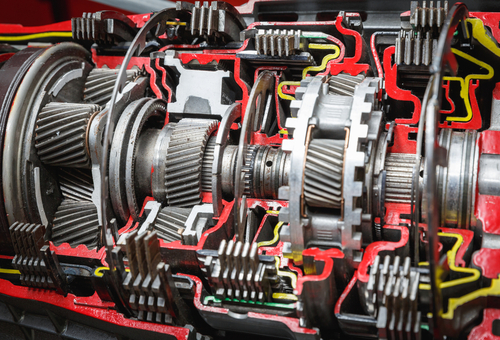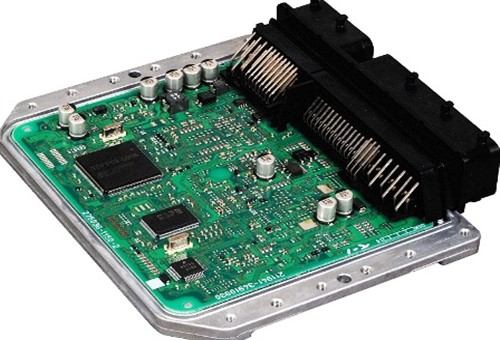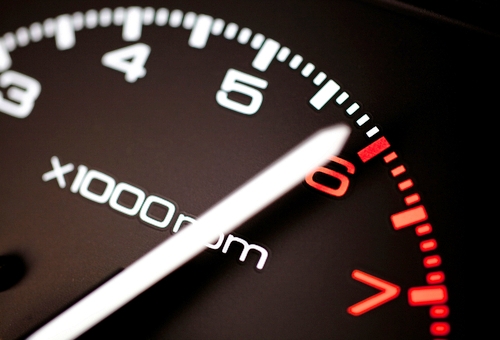
First introduced in 2002, Nissan’s RE5R05A automatic transmission is arguably the transmission that has seen the wisest use in Nissan’s history. Available in 2WD, 4WD, and AWD variants, it is still in use in many new or very late-model Nissan and Infinity models spanning a large range of passenger cars, SUVs, vans, and pick-up trucks fitted with almost all variants of Nissan’s 3.5L, 4.0L, 4.5L, and 5.6L engines. From about 2005, RE5R05A transmissions have also found their way into some KIA and Subaru models.
Taken at face value, this particular transmissions’ wide usage might suggest that the RE5R05A transmission is so widely used because it is versatile, tough, reliable, durable, and fault-tolerant, but sadly, this transmission is affected by a range of issues that proves the opposite. Even if you are not an expert transmission technician, you might have encountered or heard of Nissan vehicles suffering from issues like torque converter lock-up clutch failures, juddering or harsh gearshifts, or even transmissions that fail to execute gearshifts even if no fault codes are present.
In this article, we will take a closer look at Nissan’s RE5R05A automatic transmission in terms of what causes some of its most common failures, and although you may not be able to fix some of these issues unless you are an expert transmission technician, you will at least know what to tell your customer when his RE5R05A transmission suffers a failure. Let us start with –
This heading requires some clarification, in the sense that the transmission’s actual control software is no more susceptible to corruption or damage than the software of any other automatic transmission.
The problem is also not that this transmission is more complex or intricate than (almost) any other automatic transmission. In fact, in terms of technicalities and operation, the RE5R05A transmission closely resembles the 722.6 and NAG1 transmissions of Mercedes and Dodge, respectively. So what’s the problem, you may ask?
The problem is the fact that the basic design of the transmission is the same across all the platforms it is used in. Put in another way, it means that to make this transmission work in different applications, Nissan has designed different planetary gear sets, valve bodies, and software versions to suit each application. Moreover, in practice, many planetary gear sets and valve bodies fit on multiple versions of the RE5R05A transmission, so while it might appear as if these components are interchangeable, they are not only not interchangeable- they are also not compatible with specific calibrations and/or software versions.
An additional complication is that the external tag on each transmission that identifies its unique calibration and software version is very easily lost. While this information is duplicated on both the valve body and the TCM, nobody seems to go to the trouble of verifying this information when RE5R05A transmissions are replaced, rebuilt, or repaired, and over the years, this writer has seen a great many instances of mismatched mechanical parts and incorrect or incompatible calibration /software IDs on replaced/repaired RE5R05A transmissions.
Mismatched mechanical parts and/or incompatible calibration IDs typically result in issues that resemble the effects of defective control modules, such as unpredictable shift patterns, harsh or erratic shifts, or in some cases, an immediate limp mode upon first use of a repaired/replaced transmission. In many of these cases, the first repair option seems to be the replacement of the plug-and-play TCM, but of course, this does nothing to correct the underlying root cause, which is a mismatch between mechanical parts, or between mechanical parts and calibration/software versions.
Thus, whenever you encounter issues on a repaired/rebuilt/replaced RE5R05A transmission, a good way to start looking for the problem is to verify that-
The second point is not always easy to determine, and in some cases, the transmission has to be disassembled to identify or verify part numbers. Unfortunately, except for changes in shift points, which do not always set fault codes, there is no single set of symptoms that would make it easy to differentiate between the symptoms of mismatched planetary gear sets, as opposed to say, the symptoms of software conflicts.
Apart from mistakes made during the repair or replacement of RE5R05A transmissions, there are other, more obvious, and more easily detectable issues to look out for, including-
NOTE: Before we get to specifics, it is worth mentioning that a) engine coolant intrusion is always the result of failing radiators, and b), that some radiators fail while under pressure when the coolant is hot, while others fail under vacuum, or partial vacuum, such as when the coolant is cooling down. Regardless of the failure mode though, the only way engine coolant can end up in the transmission is via a failed radiator, and therefore, the radiator must be replaced whenever engine coolant is found to be present in the transmission fluid.
One of the biggest issues with these transmissions is the intrusion of engine coolant into the transmission, which happens when the transmission fluid’s coolant lines begin to leak fluid past failed seals in the radiator. However, what gets damaged, and to what degree, largely depends both on the amount of coolant in the fluid, and for how long the fluid had been contaminated with engine coolant.
When engine coolant affects the operation of the direct clutch*, the ethylene glycol in the coolant attacks the seals around the piston that activates the clutch. In severe cases, the seals swell up to the point where the piston cannot move in its bore, which typically results in the TCM setting trouble code P1762 – “Direct Clutch Solenoid Valve”, and the transmission failing to up-shift from first gear to second gear, and/or from second gear to third gear. Also, the transmission may not engage gears when manual selection is used. The only remedy for this condition is the replacement of the direct clutch as a complete assembly.
* The Direct Clutch is a clutch pack that is located between the Hi/Low reverse clutch, and the clutch packs that control second, third, and fourth gears.
The TCM monitors the operation of the direct clutch by monitoring the voltage drop across the clutch’s control solenoid, so when it detects an improper voltage drop when the clutch should activate, the TCM concludes that the clutch is inoperable. As a practical matter though, code P1762 can also be caused by things like a clogged/dirty transmission fluid filter, a failed or defective vehicle speed sensor, or inadequate line pressure.
However, since coolant intrusion is a known (and very common) problem on RE5R05A transmissions, the fluid must be inspected for the presence of engine coolant. The best way to go about this is to remove the sump; if the fluid looks like a strawberry milkshake, there is lots of coolant present. If, however, the fluid appears normal, or close to normal, check the inside of the transmission casing for evidence of corrosion: if no corrosion is present, check the bolts holding the filter and valve body down. Engine coolant is typically slightly acidic, and this will cause pitting of the bolt heads, with pitting being a sure sign of the presence of engine coolant in the fluid, which brings us to-

While RE5R05A transmissions that are mated to 5.6L engines have a different direct clutch design that does not suffer from piston seal failures, all RE5R05A transmissions can, and very often, do, suffer TCM failures when engine coolant contaminates the transmission fluid.
This typically happens when the coolant causes short circuits in the transmissions’ internal wiring, which can set multiple fault codes- depending on which parts of the internal wiring harness is affected. Typically, though, the shift solenoids’ terminals are the first to corrode and short circuit, so you are likely to see codes relating to shift solenoid failures being set and stored first, followed by others relating to the operation of internal sensors and/or clutch pack control solenoids.
In practice, it is rare to find a TCM on a RE5R05A transmission that has not suffered some form of damage after an episode of engine coolant intrusion. In most cases, one or more driver circuits serving shift solenoids fail as a result of short circuits in the transmissions’ internal wiring and while it is tempting to merely replace the harness and clear the codes while hoping for the best, the fact is that the TCM is almost certainly damaged-even though the actual damage may not be visible or apparent.
In fact, the best thing to do when you encounter engine coolant in a RE5R05A transmission is to include the cost of a TCM in the repair estimate to prevent that uncomfortable discussion with the customer when it turns out that the TCM was damaged, after all.
WARNING: Be aware that attempting to prevent coolant intrusion into the transmission by bypassing the radiator through installing an aftermarket oil/fluid cooler is NOT recommended. The reason for this is that the torque converter lock-up clutch’s actuating piston does not have a return spring, meaning that the torque converter’s charge pressure needs to exert an opposing force to return the piston to its rest position.
To maintain the required reverse pressure, the OEM radiator incorporates several restrictions at different points in the fluid’s cooling lines, which means that unless these restrictions are replicated exactly, the torque converter will pass a significant portion of its charge pressure through the fluid’s cooling circuit(s), as opposed to applying it to the actuating piston. This condition could therefore cause a failure of the actuating piston to return to its rest position, meaning that the lock-up clutch could fail to disengage.
While the above sections describe perhaps the most common issue with RE5R05A transmissions, two additional failures require a special mention, these failures being-
We mentioned elsewhere that the direct clutch drum on transmissions mated to 5.6L engines is different from the direct clutch drums on all other variants of the RE5R05A transmission. The difference is that on transmissions mated to 5.6L engines the direct clutch drum is made entirely of steel, while on all other variants, the clutch drum is made of aluminium and a steel insert that is pressed into the aluminium outer part.
The purpose of the steel insert is to offer an improved sealing surface for the actuating piston's seals, but the problem with this design is that the pressurised fluid that acts on clutch packs on either side of the direct clutch passes through both the steel and aluminium parts of the drum. So where is the problem, you may ask?
The problem with this design is that under some conditions, the different thermal properties (different expansion and contraction rates) of steel and aluminium destroys the interference fit between the aluminium drum and the steel insert. This results in the aluminium drum rotating relative to the steel sleeve, which then blocks off the fluid passage, thereby preventing pressurised fluid from acting first on the direct clutch, and then on subsequent clutch packs.
This condition will typically lock the transmission into first gear, and the only way to correct this issue is to replace the direct clutch drum as a complete assembly that should ideally be sourced from a Nissan dealer. The part number for this drum assembly is 31500-90X0B.

NOTE: In Nissan-speak, an engine flare-up refers to a sudden and uncommanded increase in engine speed between gearshifts.
While this condition is relatively rare on RE5R05A transmissions that have not been rebuilt or repaired, it is almost a given that the condition will be present on transmissions that have seen extensive disassembly and re-assembly, or transmissions that have been completely rebuilt. Note that in almost all instances of this condition, gear ratio codes P0734 and P0735 will be stored as active codes.
In practice, this condition is caused when the OEM sealing rings between the Input Clutch and the turbine shaft fail, thus causing a severe loss of line pressure. The problem with these sealing rings is they are a) fabricated from plastic, and b), that locating them on the turbine shaft without damaging them is almost impossible. Therefore, when a RE5R05A transmission is being assembled, the rings are often stretched open too far, which deforms them to the point where they cannot provide an effective seal against the pressure pump’s stator to maintain pressure for the input cutch.
This problem also occurs on the sealing rings located on the sun gear shaft, with the loss of line pressure causing a severe clutch slip between second and third gear. In some cases, and depending on the degree of pressure loss, clutch slippage may also occur during shifts from third to fourth gear, as well as during shifts from fourth to fifth gear. There may also be some slippage and/or hesitation in reverse gear.
NOTE: Be aware that if you ever rebuild a RE5R05A transmission, you can prevent this condition from occurring by replacing the turbine shaft seals with aftermarket Teflon seals used in Volkswagen’s 09G transmission, and substituting the sun gear shaft seals with the nickel-coated sealing rings used in Ford’s 4R70W transmission. No modification to anything is required- the VW and Ford parts are direct-fit replacements for the Nissan parts, which leaves us with this-
The issues described above are far from the only ones that afflict Nissan’s RE5R05A transmission, although they are arguably the most common ones. However, bear in mind that while it is one thing to know what causes a particular problem, fixing these problems is another matter entirely.
Therefore, we recommend that you resist the temptation to attempt repairs to this transmission if you do not have access to service information such as pressure flow charts, wiring diagrams, and connector pin-out charts. Fortunately, though, this resource, which is a 128-page troubleshooting and repair guide in downloadable PDF format, contains everything you need to understand this transmission and its multiple flaws, defects, and design shortcomings more completely.
Moreover, this resource will not only help you diagnose issues on RE5R05A transmissions quickly and accurately- it will also help you prove to your customer that there really is something wrong with his transmission and that you are not just out to make a quick buck off him.